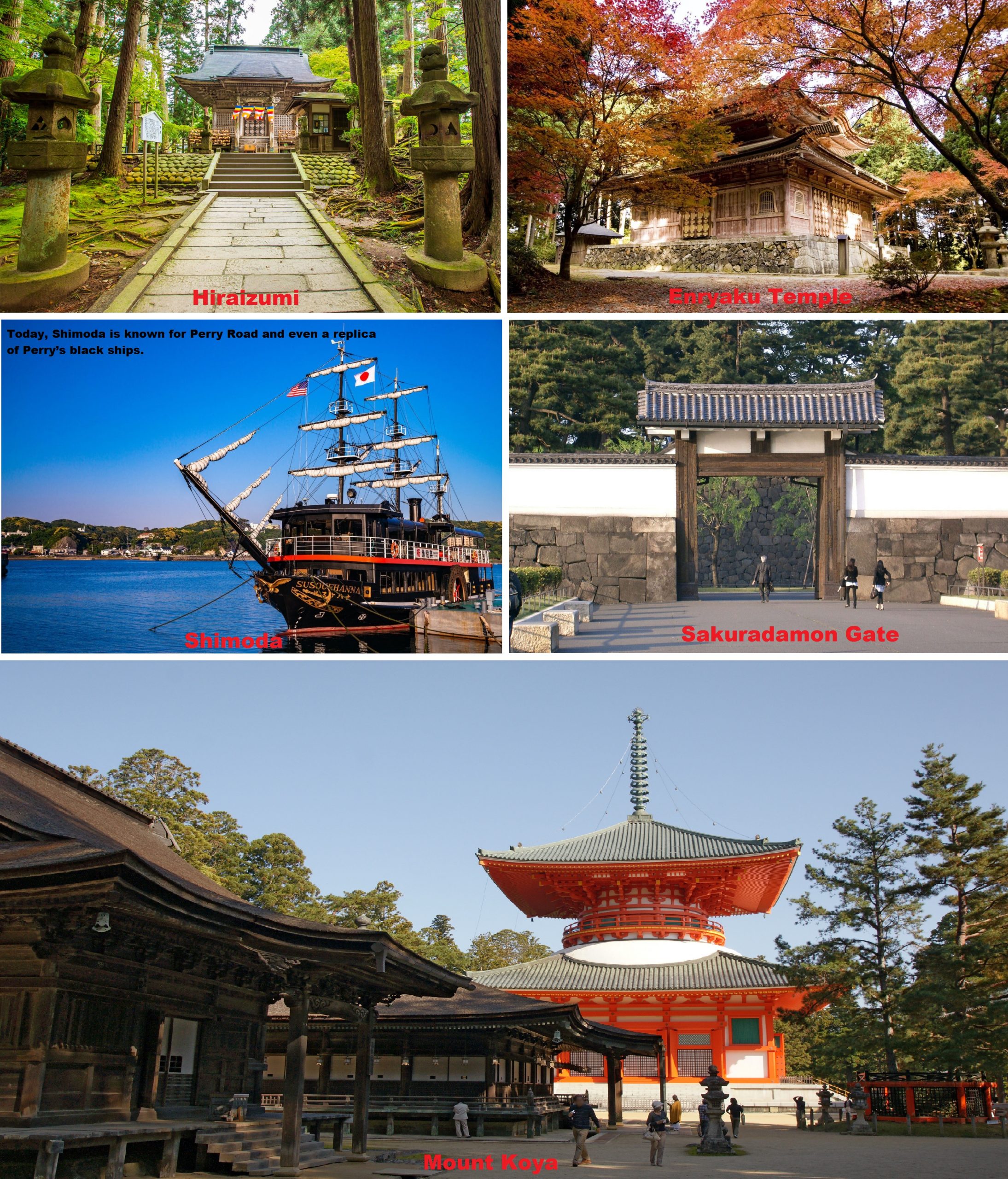5 Places to Visit, Important in Japanese History

There are few things that Japan takes more pride in than its rich history. Japan is ranked 11th in the number of UNESCO World Heritage Sites by country. Elements of its past, like samurai, geisha and ninja, have captured people’s imaginations worldwide.
Japan is full of historical locations, but a few have played a particularly critical role in shaping Japan’s history. Aside from the Peace Park in Hiroshima and the Atomic Bomb Museum in Nagasaki, here are five more places to visit and learn about Japanese history.
1. Hiraizumi
In the 12th century, Hiraizumi, a town in Tohoku, was the seat of the “northern branch” of the powerful Fujiwara family. For a brief time during the 12th century, it rivaled Kyoto in cultural and political importance. Then, in 1189, it became the stage of one of Japanese history’s most infamous events.
Minamoto no Yoshitsune, one of the most famous samurai in Japanese history, sought refuge with the Fujiwara to escape his elder brother Minamoto no Yoritomo, who considered Yoshitsune a rival. However, the Fujiwara betrayed him. In the search for his brother, Yoritomo razed the city of Hiraizumi. Once captured, Yoshitsune was forced to commit seppuku (disembowelment). Yoritomo later established the Kamakura shogunate, and Hiraizumi never recovered its former glory.
Since then, the spectacular rise and fall of Hiraizumi have inspired numerous poets and legends. But despite its tragic history, Hiraizumi’s UNESCO-designated temples and gardens are well preserved. And admirers of Yoshitsune can visit a memorial dedicated to this tragic figure.
2. Enryaku Temple
Enryaku Temple is located on Mount Hiei in the mountains of northern Kyoto. It is the headquarters of the Tendai sect of Japanese Buddhism and was founded in 788 by the monk Saicho, who introduced this form of Buddhism to Japan from China. Enryakuji grew into a complex of over 3,000 sub-temples with its army of fearsome warrior monks during the following few centuries.
However, the most dramatic part of Enryaku Temple’s history came several centuries later. Oda Nobunaga fought against what had developed from warrior monks into a powerful Buddhist militancy in his attempt to remove all rivals and finally unite Japan. In 1571 Nobunaga attacked the temple, leveling most of the buildings and killing most monks.
Though the temple complex was virtually destroyed then, it was rebuilt in the early Edo period. Enryaku Temple is also part of the UNESCO Site “Historic Monuments of Ancient Kyoto.”
3. Mount Koya
This next entry is another important place for Buddhism and is part of a UNESCO site. Koya-san, or Mount Koya, is the center for Shingon Buddhism in Japan. Its founder was Kobo Daishi (also known as Kukai), a Japanese monk who studied Buddhism in China and founded the Shingon school upon returning to Japan in 806. The blessing of several emperors allowed him to preach Shingon teachings and found temples.
Kobo Daishi wandered the country for years, searching for a place to center Shingon Buddhism. According to legend, two Buddhist gods directed him to a field amid eight mountain peaks. He built the original monastery there in 826. Since then, hundreds of temples have been built on Mount Koya.
Today, visiting Koya-san immerses you in Japan’s Buddhism history. Some of the most important buildings on Koya-san are the head temple Kongobu-ji, Kobo Daishi’s mausoleum and the Tokugawa family tomb in Okunoin—the largest cemetery in Japan. Visitors can also stay overnight at a temple and experience the life of a monk for a day.
4. Shimoda
On July 14, 1853, four large black ships, or kurofune, with menacing smoke from coal-fired steam engines anchored at the entrance of Tokyo Bay and aimed their powerful cannons at the town of Uraga, Kanagawa, to force the country to open for trade. The ships, commanded by Commodore Matthew Perry, marked the beginning of the end of Japan’s 220-year policy of isolation—and the country’s course to imperialism.
Commodore Perry’s fleet then moved to Kurihama, modern-day Yokusaka, displaying a show of force with a 13-gun salute. The technology was unprecedented in Japan, and the Shogunal court had no choice but to open negotiations. Today, Kurihama is home to the Perry Memorial Hall Museum and the Matthew C. Perry Landing Memorial.
After the American delegation left, Japan immediately began constructing defenses—most noticeably the batteries in modern-day Odaiba. However, it was no use against the American war horse. In modern times, the forts have been converted into Daiba Park. Perry returned a year in 1854 with eight ships and opened an American consulate in Shimoda in Shizuoka Prefecture. Today, Shimoda is a resort town known for Perry Road, beautiful streets with traditional views, and even a replica of Perry’s black ships.
5. Sakuradamon Gate
The Sakuradamon is the largest gate of Edo Castle in Tokyo and the location of the most famous assassination in Japanese history. On March 24, 1860, Ii Naosuke, the chief minister of the Tokugawa shogunate, and his entourage headed to Edo Castle for meetings.
Ii was a proponent of the reopening of Japan and, in 1858, signed a treaty with the United States. This defied the emperor, who advised the shogunate not to sign it. Treaties with other countries followed. A group of 18 Ronin who opposed relations with foreigners and Ii’s defiance of the emperor attacked his entourage outside the gate and killed Ii. This “Sakuradamon Incident” catalyzed the following violent decade, culminating in the Meiji Restoration in 1868.
Built in 1620, it is well preserved and designated an Important Cultural Property of Japan. Its design, two gates standing perpendicular to each other, was considered impenetrable because it forces those attempting to enter to turn at a right angle, slowing them down.

























